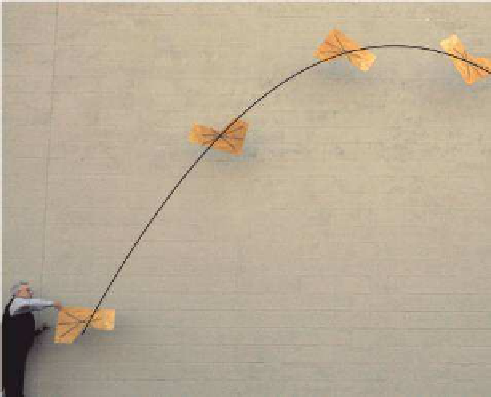Game Development Reference
In-Depth Information
Figure 12.8
The center of mass is the special point that obeys the simple kinematic equations from Chapter 11. Any
other point traces out a spiraling path as the object rotates.
we threw it in the air and took a series of pictures of its trajectory with a
camera mounted on a tripod. Finally, we merged these frames together into
a single image, and used least-squares to fit a parabola through the points
marking the center of mass. The result of the experiment is Figure 12.8.
One small note: When fitting the parabola, we did not include the first
frame in the data set. As you can see, on the first frame the board is still
in the assistant's hand, and thus has not yet begun its (parabolic) free fall
trajectory.
Because an object will rotate about its center of mass when allowed to
rotate freely, in a physics simulation is it highly advantageous to select the
origin of your object to be at its center of mass. Of course, you may have
good reasons to put the origin of the object elsewhere. For example, you
may have a graphical representation of an object with the origin placed
somewhere that made sense to the artist who made that model. In general,
if you place the origin somewhere other than the center of mass, then you
will likely have to deal with two “positions” of the object: one position
within the physics system that describes the world coordinates of the center
of mass, and another, perhaps in the rendering system, for the origin of your











Search WWH ::

Custom Search